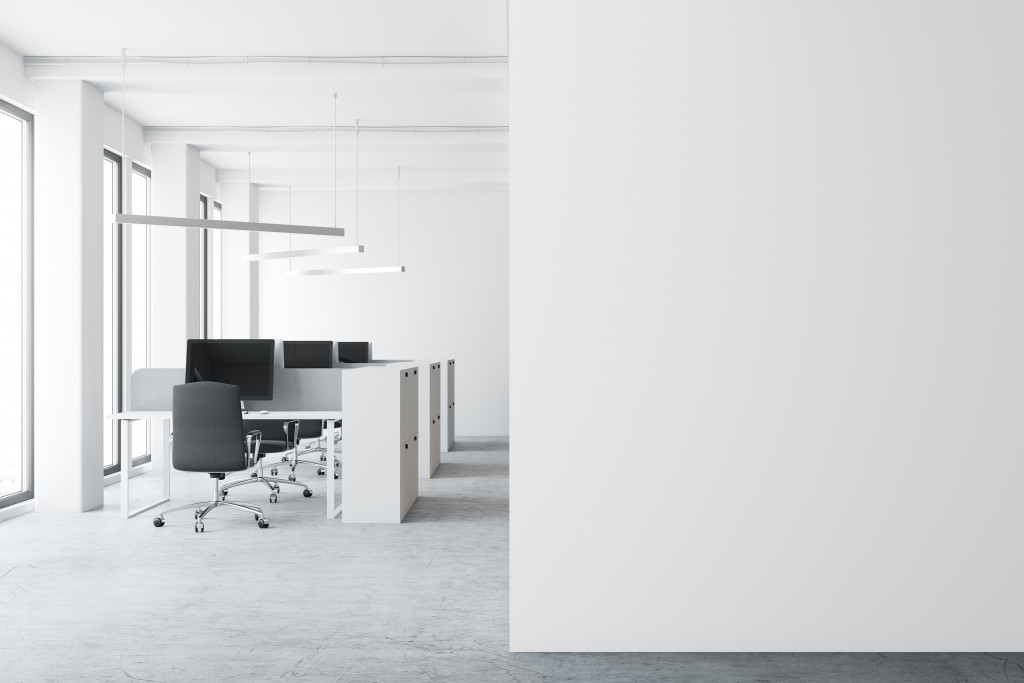A workplace is a place where people spend many hours of their day. In fact, the average office worker spends 9-10 hours per week in an office setting. With that being said, it’s crucial to have a work environment that will keep your employees happy and healthy.
Creating a comfortable and welcoming workspace can do wonders for employee morale and productivity! The following are eight tips you should consider before designing your next workspace:

1. Create a Comfortable Environment
People work much more efficiently if they’re comfortable. This means making sure your employees have access to ergonomic furniture and well-placed windows that let in sunlight.
Studies also show that good foot traffic flow can be an enormous part of creating comfort in the workplace so think hard about where desks should be located and where people will naturally congregate based on their job functions or position within the company hierarchy.
2. Office Layout That Encourages Communication
The layout of the office has a significant impact on communication between employees who need to work closely together.
If you have two departments that usually work together but have their desks situated far away from each other with a lot of people in between them, it will be much harder for those two departments to communicate and work together.
There may also be many opportunities for companies with remote workers to create designated office areas, which would allow for more communication opportunities.
3. Create Meeting Spaces
Beyond the typical conference room, make sure you think about where others can gather to discuss business or brainstorm ideas.
It’s good practice to leave some extra open space at the end of hallways if people want to chat on their way somewhere else, as well as putting up cork boards or having strategic glass walls near common work areas that serve as “water coolers” without making employees feel closed off from their colleagues.
4. Consider the Cubicle Layout
Of course, it can be hard to change office layouts completely (especially if you’re in a highly regulated building), but there are definitely some things you can do to suggest changes for future office layouts.
For example, think about demountable glass partitions, which offer more privacy and sound absorption than most cubicles on the market today and allow for easy reconfiguration of space when needed or year-to-year changes in your business needs require them to be moved/changed.
5. Light Up Your Office
Office lighting has a significant impact on how people feel about their workspace, so much so that many companies are turning to the use of LED lights.
Studies show that employees perform better when they have natural light coming into their office rather than just fluorescent lights, which can be harsh and unflattering.
6. Use Comfortable Chairs and Desks
A big part of productivity is for your employees to actually enjoy being at work. This means using more comfortable chairs and desks, even though more comfortable furniture tends to cost a bit more upfront, in the long run, it will boost morale, increase productivity and reduce turnover rates!
7. Separate Meeting Space from Working Space
Having different desk types can do wonders for increasing productivity and workplace morale.
While it may be great to have a comfy couch in the break room for employees to relax when they get off work, office spaces dedicated solely to people meeting with clients should be quite different from areas where employees spend their days working currently.
Meeting rooms can include more comfortable seating options like couches and armchairs. At the same time, an open workspace within an office should generally consist of tables and chairs similar to what you would see in a library or school setting.
8. Put Up Natural Landscaping Outside Your Office Building
While landscaping is often overlooked when designing an office layout, putting up planters and trees outside your building can increase productivity. The reason behind this has less to do with comfort and more to do with views.
Employees who can see greenery and nature around them tend to get more done in a shorter amount of time because they have a sense of calmness in their environment, which helps reduce stress, the opposite being true for people who work in an office that lacks natural landscaping or just has walls surrounding it without any windows or view.
Designing your office in a way that encourages productivity can be a challenge, but it’s definitely worth it in the end. By using some tips we’ve mentioned, you can start to see a difference in the amount of work your employees are able to get done. Keep in mind that what works for one company may not work for another, so feel free to experiment with different ideas until you find something that suits your needs!
